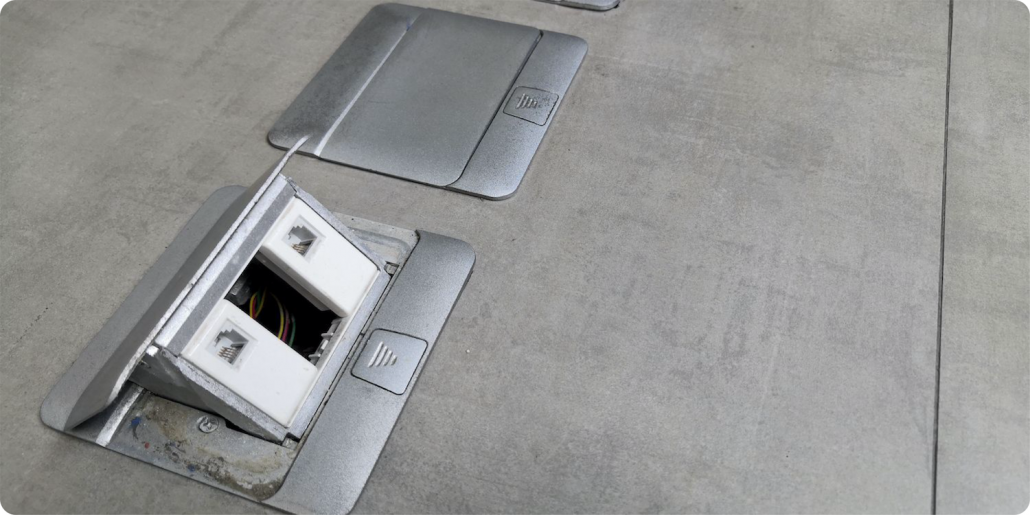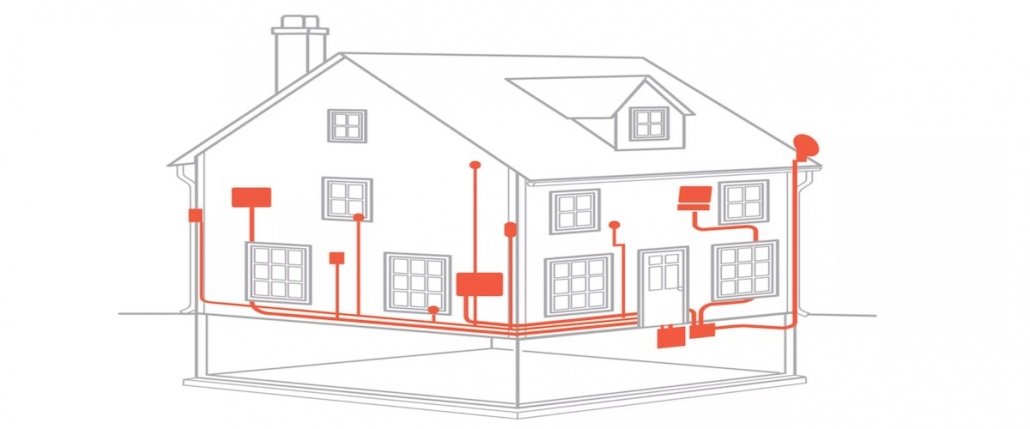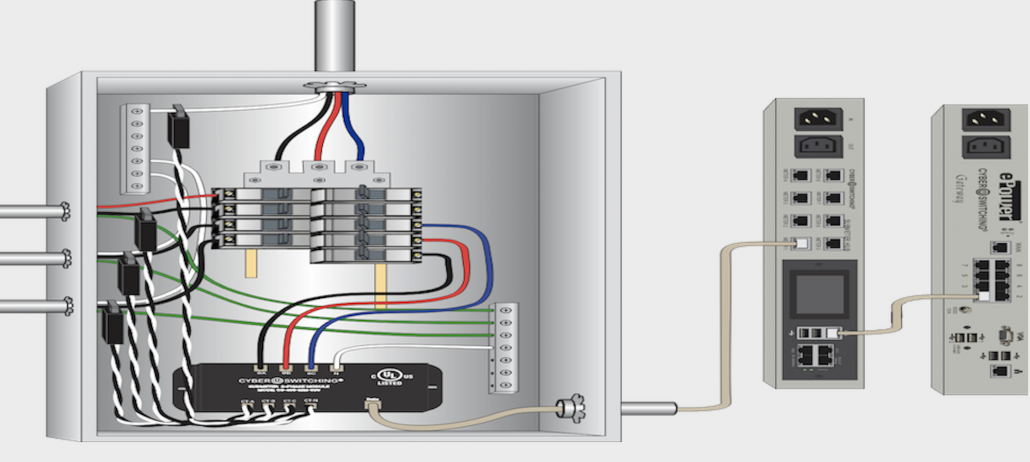July 17, 2020 | Cristina Dinulescu
The National Fire Protection Association reported that between 2013-2017, 10% of all home structure fires were caused by electrical distribution and lighting. What’s more concerning, another NFPA report shows that “electrical failures or malfunctions were the second leading cause of U.S. home fires in 2012-2016 (behind fires caused by unattended equipment), accounting for 13% of home structure fires.”
It is important to ensure the electrical safety of your home, and sometimes that means looking for signs your house needs rewiring. Not only will that keep your family and home safe, but it will also come in handy for insurance purposes.
The US Fire Administration estimates that every year domestic fires cause approximately 280 deaths, 1,125 injuries, and over $1 billion in property damage. But you can be fire smart with electricity in your home and if you’re wondering “how can I tell if my house needs rewiring?”, here are the most common signs.
1. Old Wiring
If your home is more than 40 years old, then that in itself can be a sign of faulty wiring. Chances are you have aluminum wiring, which was very popular from the mid-1960s to late 70s. At that time, the technology to mine copper didn’t exist, therefore copper was very expensive and aluminum was a more affordable option.
However, aluminum wiring is more prone to electrical issues than copper. It’s more susceptible to overheating, which is why the most common signs of faulty wiring with aluminum are scorching and burnt smell. You can check if this is the wiring in your house by looking on the outer jacket of the cables at your electrical panel for the letters AL or ALUM.
Another type of old wiring is Knob & Tube wiring, also known as Open Wiring. This is typically the case for older, historic home builts before the 50s. The knob and tube wiring lacks ground wiring, which means you can’t plug in any electronics or appliances that use three-pronged plugs. This increases the risk of electrical shock and fires.
2. Sizzling Sounds and Burning Smells
Some signs of faulty wiring require less technical knowledge and rely more on your senses, specifically hearing and smell. In certain instances, you might not be able to see the electrical problem, but you will surely be able to hear it or smell it.
The buzzing or sizzling sounds are also signs of faulty wiring. A loose wire or a fault in the circuit can cause vibration, therefore the buzzing sound. Sizzling noises can sometimes be accompanied by occasional sparks. This happens also because of loose wires, or frayed wires in the circuit.
When these issues happen near an outlet, then the resulting sparks burn the plastic, which will result in a very particular smell. In some cases, this happens inside the wall, and the sparking wire burns the casing within that wall. If you can smell this persistently in your home, even faint, then you probably do have wiring issues.
3. Frequent Blown Fuses and Tripped Breakers
If you notice your fuses are blown frequently or your circuit breakers tripped, then those are your first signs you have faulty wiring. When a circuit exceeds the amperage it can handle, it trips as a safety measure. It is designed so as to shut down the power supply to avoid overheating.
Sometimes, a tripped breaker can simply mean there’s an issue with a particular appliance, but if this happens all the time, then it can be a sign your house needs rewiring, or at the very least you might need to replace your electrical panel.
The same is valid for blown fuses, which also show that you might have an overloaded circuit. Since both fuses and circuit breakers prevent dangerous surges that may cause electrical fires, when they frequently malfunction, it’s important to think about rewiring.
4. Outlet Signs
Loose outlets, discoloration of outlets, as well as switches, and arcs or sparks coming from an outlet are all signs of faulty wiring. The discoloration of an outlet can also be an indicator of a loose connection. If it starts to blacken or turn brown, then that’s a sign of electrical arcing, which can spark a small fire.
Both loose connections and degraded wiring only aggravate over time. The more the problem persists, the bigger the sparks get, which means the fire hazard becomes greater. If you notice the sparks often, or if the discoloration is noticeable around the house, then it’s time to call the electrician.
5. Lighting Problems
Flickering lights
Flickering lights can also indicate faulty wiring, whether the circuit is overloaded, or there’s a loose connection. Lighting circuits are usually the first to show signs your house needs rewiring, due to the fact that they typically have lower ratings in comparison to outlet circuits.
In some cases, the problem may not be as serious, and a flickering or dimming light can be caused by the bulb not being properly connected. However, if you change the bulbs regularly and the flickering persists, then this points to a fault wiring. Another sign that this is the case is if the lights flicker throughout the house.
Dimming lights are also a sign to look into your wiring. If the wires aren’t working correctly, then electricity running through them won’t always reach its destination. The irregular connection can make the light flicker or dim, if they’re receiving too little voltage.
Burnt Out Bulbs
If your light bulbs frequently burn out in a socket, that’s a sign that your fixtures can’t handle the bulb wattage. This can be a problem with the fixture itself, or a wiring problem. Here are some steps you can take to determine if it’s one or the other:
- Use the same type of light bulb in a different fixture
- If it still burns out, buy higher quality light bulbs with a longer lifespan and use in both fixtures
- If it only burns out in the original fixture, then there’s a problem with the lighting fixture itself
- If it burns out in both, then you might be dealing with faulty wiring.
6. Electrical Shocks
If you feel a tingling sensation when you touch a cord or plug something in, then that’s an electrical shock. They vary in intensity, but even the lowest intensity electrical shock is a sign of faulty wiring.
Electrical shocks are very serious, even if they may not feel that way in the moment, and can cause anything from numbness to burns to long-term issues, including memory loss. More serious shocks can be even deadly, causing heart or respiratory failure.
Electrical Inspection: Take The First Step Towards Electrical Fire Safety
These are the most common signs that you’re dealing with faulty wiring and keeping an eye out for them will help you know if your house needs rewiring. If you do notice them, or simply want to be on the safe side with older homes, then the first step is to schedule an electrical safety inspection and risk assessment.
Find a qualified, certified, and experienced electrician who not only can help you make an informed decision, but also carry on with any house rewiring or electrical system upgrade needs you may have.









